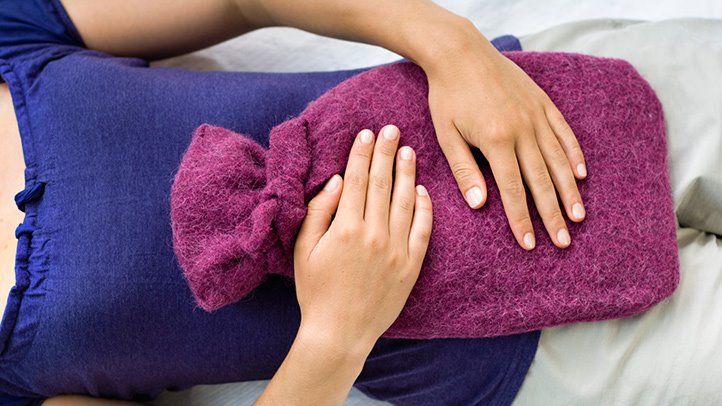Having your periods can be one of the most physically and emotionally exhausting times of the month if it is associated with pain, discomfort and cramping. Pain is usually felt in lower abdomen, lower back and in some in lower limbs. It’s normal for 50 – 55% of women to have mild abdominal cramps on the first day or two of their period, about 10% of women experience severe pain.
There are two types of dysmenorrhea:
- Primary dysmenorrhea is menstrual pain that is not a symptom of an underlying gynecologic disorder but is related to the normal process of menstruation. Primary dysmenorrhea is the most common type of dysmenorrhea, affecting more than 50% of women, and quite severe in about 10%. Primary dysmenorrhea is more likely to affect girls during adolescence. Fortunately for many women, the problem eases as they mature, particularly after a pregnancy. Although it may be painful and sometimes debilitating for brief periods of time, it is not harmful.
Secondary dysmenorrhea is menstrual pain that is generally related to some kind of gynecologic disorder. Most of these disorders can be easily treated with medications or surgery. Secondary dysmenorrhea is more likely to affect women during adulthood.
Causes
Primary dysmenorrheal – caused by excessive levels of prostaglandins that make your uterus contract during menstruation. Lack of exercise, psychological or social stress, smoking, drinking alcohol, being overweight increases the levels of prostaglandins.
Secondary dysmenorrhea may be caused by a number of conditions:
- Fibroids – benign tumors that develop within the uterine wall or are attached to it.
- Adenomyosis – the tissue that lines the uterus (called the endometrium) begins to grow within its muscular walls.
- A sexually transmitted infection (STI).
- Endometriosis – fragments of the endometrial lining that is found on other pelvic organs.
- Pelvic inflammatory disease (PID), which is primarily an infection of the fallopian tubes, but can also affect the ovaries, uterus, and cervix.
- The use of an intrauterine device (IUD), a birth control method.
Symptoms of dysmenorrheal – Main symptom is usually sharp cramp in lower abdomen during menstruation and may also be felt in lower back, or thighs or lower limbs. Other associated symptoms are nausea, vomiting, diarrhea, lightheadedness, or general achiness.
For most women, the pain usually starts before or during their menstrual period, peaks with in 24 hours, and subsides after 2 to 3 days. Sometimes clots or pieces of bloody tissue from the lining of the uterus are expelled from the uterus, causing pain.
Dysmenorrhea pain may be spasmodic (sharp pelvic cramps at the start of menstrual flow) or congestive (deep, dull ache). The symptoms of secondary dysmenorrhea often start sooner in the menstrual cycle than those of primary dysmenorrhea, and usually last longer.
Management of Menstrual Cramps(Dysmenorrhoea) :And they need some kind of treatment so that their work does not suffer.
- Rest -lying on your back, supporting your knees with a pillow.
- Avoid strenuous physical activity.
- Holding a heating p1ad or hot water bottle on your abdomen or lower back.
- Taking a warm bath.
- Gently massaging your abdomen.
- Doing mild exercises like stretching, walking, or biking – exercise may improve blood flow and reduce pelvic pain.
- Getting plenty of rest and avoiding stressful situations as your period approaches.
- Yoga, Acupressure and Acupuncture.
- Pain killers- Are effective in relieving the pain like Ibuprofen, ibuprofen and paracetamol combination, aceclofinac alone or in combination with paracetamol. To relieve the pain painkillers should be taken as soon as pain starts and mild in nature. If one starts when pain has become very severe than its takes time to give relief. It is recommended that one should use hot fomentation also along with painkiller once the pain becomes very severe. They should always be taken full stomach. If taken empty stomach they can have side effects of nausea, dyspepsia, peptic ulcer
Hormonals pills- Use of Hormonals pills can improve or relieve symptoms of primary dysmenorrheal if given for few cycles in cases where no cause is found and it is not relieve by above mentioned measures. Now a day’s lot many low dose oral pills are available which your Doctor can prescribe after investigating you thoroughly. Usually no investigations are recommended for Dysmenorrhea of young adolescents.
Treatments of Secondary Dysmenorrhoea- Will depend upon the cause and your doctor will guide you accordingly.
Please watch our video for more information:-

